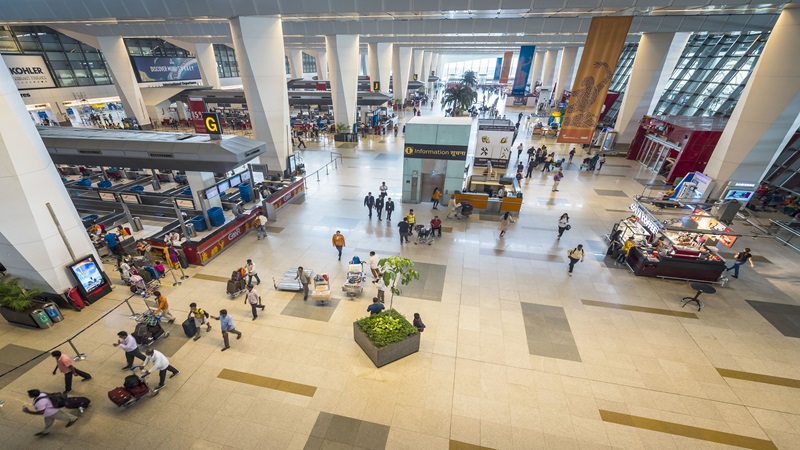Key Takeaways
- Power consumption per passenger has come down from 5.18kwh to 2.21kwh
- Delhi Airport runs on 100% renewable power
- Delhi Airport working to become net zero carbon emission airport by 2030
With this amazing achievement, Delhi International Airport Limited (DIAL) is one step closer to its goal of being a net zero-emission airport by 2030. Since 2010, the amount of electricity used per passenger has decreased by 57%.
The electricity consumption per passenger was 5.18 kWh when Terminal 3 became operational in 2010. DIAL has successfully brought this number down to 2.21 kWh in 2023 through various green initiatives.
Green Initiatives By Delhi Airport
DIAL’s energy-saving initiatives involve the integration of green building practices, the use of energy-efficient infrastructure, and ongoing efforts to further optimise consumption. These measures are – the use of state-of-the-art and dedicated automation in complex airport systems like Heating, Ventilation, and Air Conditioning (HVAC), Baggage Handling System (BHS), Information Technology (IT), Airside Ground Light (AGL), use of LED lights and very high throughput (VHT) system to maximize the assets’ performance and optimize the energy consumption via real-time monitoring and controlling.

DIAL’s Leadership Stands for Environment
Commenting on the remarkable achievement, CEO-DIAL, Mr. Videh Kumar Jaipuriar said, “DIAL’s dedication to sustainability began with the inception of Terminal 3 and remains a core principle in its operations. The continuous implementation of green initiatives ensures the efficient use of resources and a positive impact on the environment. Our focus will be on implementing innovative solutions and leveraging best practices to achieve year-on-year reductions in specific energy consumption, all the while maintaining the highest standards of service quality and passenger comfort.”
Energy-Efficient Features
The use of high solar reflective roof material, daylight harvesting concept and double glassed façade, reduction of heat island with landscaping, etc. are some energy efficient features employed at Delhi Airport.
Additional Measures Employed
The other measures include idle optimized use of conveyors in baggage handling systems, travellators, and escalators, as well as change in the home position of elevators to reduce running hours. They also include conversion of conventional lights to LED lights in terminals and Airside Ground Lights.
Blueprint of Future
Looking ahead, DIAL is committed to continuous improvement and has identified additional measures to reduce its environmental footprint, which include new terminal infrastructure with daylight harvesting concept, installation of an advanced BHS system with an integrated cart system to reduce consumption, installation of advanced high side chiller system to reduce the consumption, 100% LED light in Terminal and city side and 100% LED in AGL system.
Delhi Airport fulfills its 100 per cent electricity needs from renewable sources i.e., solar and hydropower. DIAL has installed a 7.45MW solar power plant on the airside, which is also the first such plant in an Indian airport on the airside. Environment Sustainability is the focus area for Delhi Airport, aiming to become the Net Zero Carbon Emission Airport by 2030.
In-house initiatives taken by DIAL:
- Implementation of various technological measures such as the adaptation of an automatic tube cleaning system, dedicated Chiller Plant Manager (CPM), VFD-based pump operation, energy savers in DX units, and the application of UV GI Lamp in AHU for energy conservation.
- Idle time optimization of conveyors in the baggage handling system.
- Idle time optimization in Travellator & Escalators.
- Change in Home Position of Elevators to reduce running hours.
- Conversion of conventional Lights to LED lights
- Conversion of conventional Lights to LED lights in AGL
- Active Load management of electrical equipment to reduce the losses.
DIAL plans to reduce power consumption in future by:
- Daylight harvesting concept in new terminal infrastructure
- Installation of advanced BHS system with integrated cart system to reduce consumption
- Installation of an advanced side chiller system to reduce the consumption
- 100% LED light in Terminal and city side
- 100% LED in AGL system.

